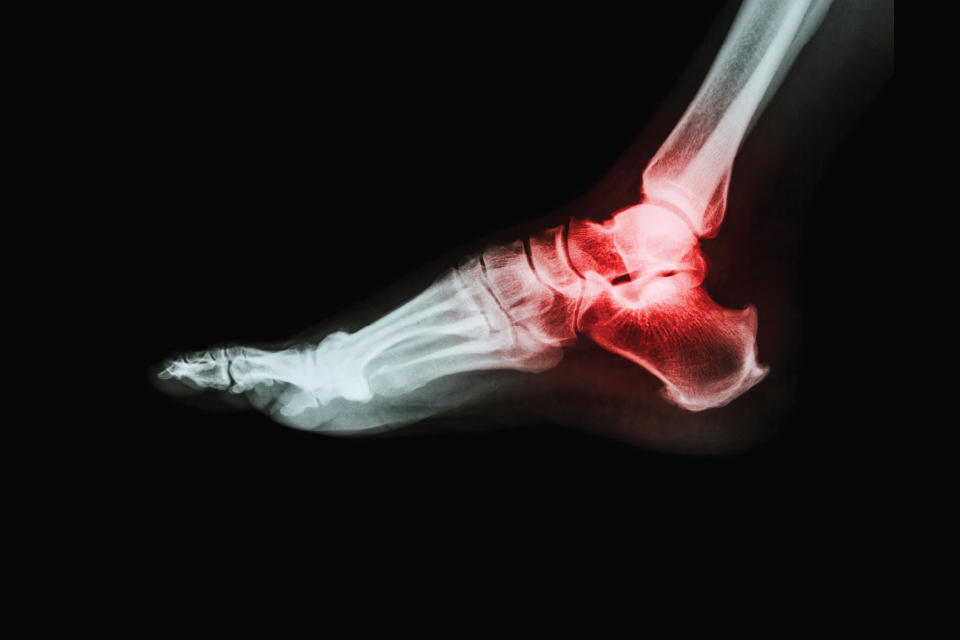Jumping Away from Arthritis

To be able to step on the track at a national or global level and do what one loves is impressive. But for me, a 40-year-old who recently overcame debilitating arthritis in my ankles, it was unfathomable.
In July 2014, I placed fourth in long jump for my age group at the US Masters National Track and Field Championships. This August, I will compete at the World Masters Athletics Championships in Lyon, France.
I almost didn’t get to where I am.
Flash back to 2008. Oh, the pain! What was I doing walking into my doctor’s office in Scottsdale, Arizona with two ankles at Stage IV osteoarthritis? But it wasn’t just my ankles; other joints were breaking down, and I was on target to be in a wheelchair by age 50.
Being constantly anxious about your health is never a good thing; Mixed in with apathy from some in the medical profession, it can spell disaster.
I was a high school and college track athlete, albeit one who was very prone to ankle sprains. I had many throughout my athletic career and started seeing doctors at the young age of 27—determined to understand the persistent pain. For more than a decade, I entered medical offices, hoping I would leave with a solution to my soreness.
The prognosis that came back was simple: I would inevitably have to undergo joint replacement. Cartilage erosion had moved my bones painfully close to one another. My body was failing me, and no one had an answer as to why. I endured surgery to remove bone spurs and was soon on dangerous levels of pain killers. “Deal with it until you can get a joint replacement later in life,” the doctors said. Scared to death of this prognosis, I started to shy away from all medical offices. And my ankles kept deteriorating.
Stage IV osteoarthritis is the worst or “old age” phase of arthritis. It’s an intense chronic pain felt with every step. Most daily activities become limited or nonexistent. The MRI taken on my left ankle told the whole story: There was complete cartilage loss and dead bone, as well as large cysts (holes) and spurs (projections).
In my 20s and 30s, I was told once cartilage is lost, you can’t heal or restore it. In defiance, I asked myself: if we can heal bone, ligaments, tendons and muscle, why can’t we heal cartilage? Years of research and many dead ends later, I eventually found a light at the end of the tunnel with the discovery of prolotherapy.
Prolotherapy stands for proliferation therapy. In very simple terms, it involves injecting an irritant, such as dextrose, into a wounded area that normally will not heal on its own. Typically tissues such as ligaments, tendons and cartilage can stop healing short of a full recovery because they lack blood flow. Since my sprained ligaments could not completely heal, this equaled laxity, or looseness, in my joints—leading to cartilage erosion and, inevitably, osteoarthritis.
When prolotherapy is used on these tissues and ligaments, it gives the body a chance to heal completely.
The first six months my doctor had me go through prolotherapy, I was skeptical. The process was equivalent to having the pain of arthritis mixed with a constant feeling of ankle sprains. My ligaments were so bad they needed time to heal from the injections of simple sugar water. Six months soon turned into a few years of a consistent series of shots that involved treating the ligaments and the joint itself. Soon, it didn’t feel as painful.
More than a year after starting prolotherapy treatment, an MRI gave me hope: It showed cartilage growing. The therapy was working!
A few years into the recovery process, with the aches in my body subsiding, I wanted to see how far I could take this ankle revival. I was determined to turn back into a competitor.
“You had arthritis and now you want to compete in the long jump?” my doctors asked. I was a track athlete once, and the long jump was my favorite event. “You will just damage the joints again,” they said.
With every step, sprinting exerts a force over four times your body weight on joints. When long jumping, this shock can reach over 10 times your body weight when hitting the takeoff board.
Few sports require putting that much force on a body in a tenth of a second. And all that impact had to go somewhere. For me, it went straight to my ankles—the same joints that were once propositioned for replacement.
Acting on a dream is sometimes risky. This was worth the danger.
I began my training. The first few months were less than ideal. I had pain everywhere. But I stuck with it and, given some time, something happened. Amazingly, the actual act of training was a final step in my healing.
Healing from extreme arthritis is not elusive. The answers, however, are more multifaceted than I originally thought. And while prolotherapy treatment worked for me, it may not work for everyone.
First, you must completely understand what caused the underlying issue. For some, like me, the answer is complex. For others, it’s as obvious as an old injury. Second, you must focus on healing the body in its entirety through nutrition, supplementation, and exercise regimens. And third, you must take into account the particular joint as a whole—the surrounding ligaments, tendons, and bones must be scrutinized.
Only when I acted upon all of these components as a whole was I able to make a comeback.
Through my therapy and training process I have learned that it is us, not our doctors, who are the ones ultimately responsible for our bodies. We are the ones ultimately responsible for being our own inner champions.






